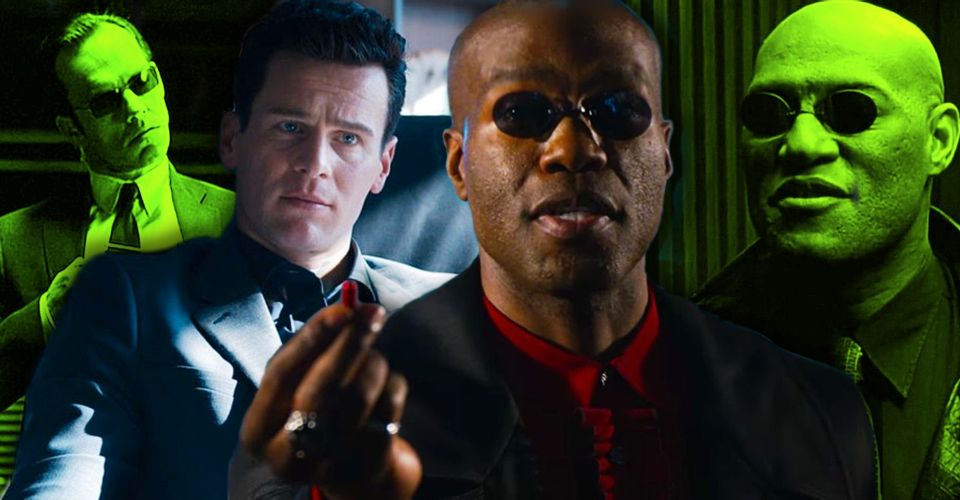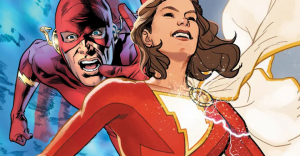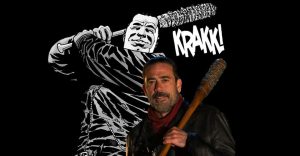How The Matrix Resurrections Justifies Its Controversial Recastings

Warning: Spoilers for The Matrix Resurrections ahead.
Lana Wachowski’s The Matrix Resurrections recast two of the most iconic characters in its roster, but, despite the controversy, this recasting was completely justified within the film. Resurrections, the continuation of the mind-bending saga of humans rebelling against oppressive machines, reinvigorates the strong themes and complex narrative standardized in the series. Though it might appear a slight on the still active previous actors, Wachowski’s decision to recast was a thematic one that will set the standard for The Matrix‘s future.
Throughout The Matrix Resurrections‘ promotions, questions arose concerning the cast. The main characters were once again played by their original actors, with Keanu Reeves as Matrix‘s Neo and Carrie-Anne Moss as Trinity, but nearly every other role was cast with younger actors, including the rebel leader, Morpheus, and the malevolent virus and Neo’s archenemy, Agent Smith. Though Laurence Fishburne and Hugo Weaving may have been able to reprise their roles, too, Resurrections seemed not to need them, instead employing Yahya Abdul-Mateen II and Jonathan Groff, respectively. This recasting, however, proves integral to Resurrections‘ story, having real thematic weight and bringing legitimate suspense to viewers.
The Matrix Resurrections follows Neo’s second entrapment in the Matrix, having been resurrected from death by the machines; the Matrix has been reset, with important programs covered up to convince Neo that everything in the previous films was merely video games he’s created. Before Neo reawakens again in The Matrix‘s real world, he runs a modal program within his game, a repeating simulation used in game design to develop characters. Human rebels outside the Matrix tap into this modal, discovering a recreated, agent version of Morpheus. This younger, less experienced Morpheus becomes conscious and joins the rebels in pursuit of freedom. While the new Morpheus is Neo’s inadvertent creation, Agent Smith is not; he exists within the Matrix as Neo’s boss, completely unaware of his previous incarnation. As Neo’s proximity to beings important to him seems to fuel the Matrix, Smith must be kept close, but masked, as to prevent refreshing Neo’s memories.

The new forms of Morpheus and Agent Smith function perfectly with the new tone and themes The Matrix Resurrections utilizes. The film brings a lighter, more comedic flavor to its cerebral material, embodied delightfully by Abdul-Mateen II’s Morpheus; the brightly dressed, lively leader of the rebellion enthusiastically aids Neo to re-enlightenment. Resurrections also spends a significant amount of time addressing the necessity of rebootquel of The Matrix, a metatextual theme that questions its own balance of callbacks and new material. Agent Smith’s new form reflects this sentiment; Smith is as powerful and threatening as he once was, but appears different, and eventually turns his attention away from Neo, acting as a neutral ally. As with many characters in Resurrections, the old favorites are back but retooled for new purposes.
Future films in The Matrix universe may be on the way, as implied by the end of Resurrections. Its recast and new roles will be to any upcoming film’s benefit; younger actors bring new energy to characters that appear to be gaining different significance in the narrative than they had in previous films. The ending of Matrix Resurrections hints that Agent Smith may be a full-fledged ally in future films, and the new Morpheus’ origin as an agent in the Matrix may have exciting latent consequences. For certain, The Matrix Resurrections recast roles were completely justified and set up an enthralling future for The Matrix series.
About The Author

















